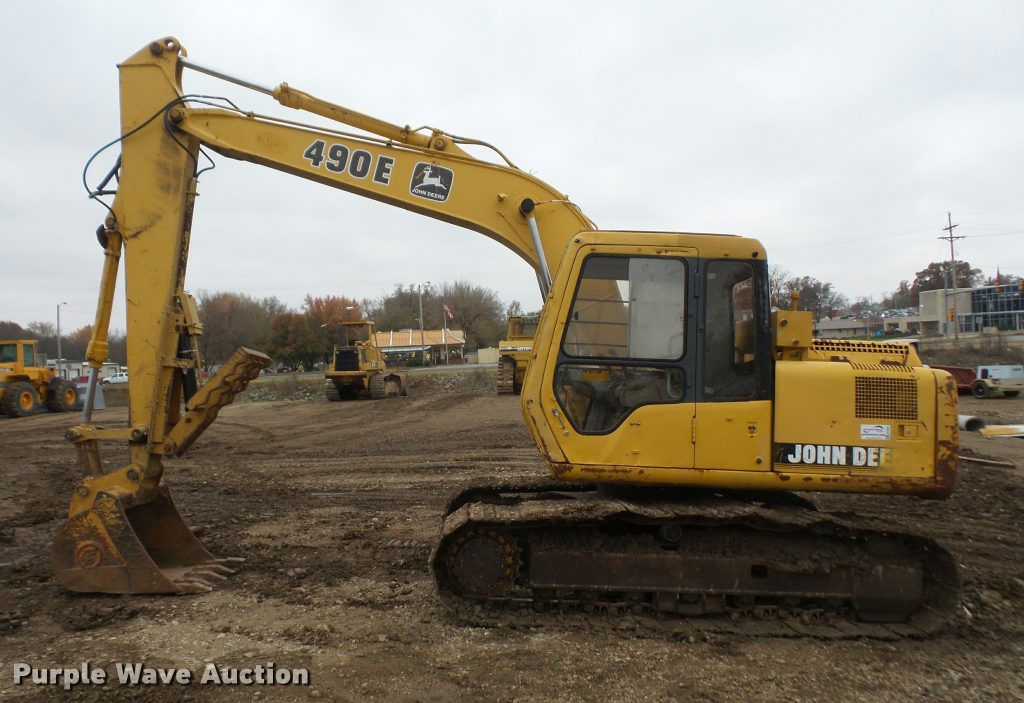John Deere 490 is an outstanding construction equipment with the impressive performance ability. However, since the machine has existed for a while, there is no doubt that it has some problems. One of those problems is that there are many parts and accessories, which keep on being listed in the market, every day.
john deere 490 excavator Air Filters
The John Deere line of earthmoving equipment includes a wide range of machines. From small backhoes to large motor graders, the company has machinery that fits the needs of all types of heavy-duty applications. Air filters are a necessary part of every machine’s construction and are found in varying numbers depending on the model.
All air filters for John Deere equipment are designed specifically for each particular piece of machinery and are not interchangeable with other models. They come in different sizes and shapes and serve to protect the engine during operation. While these filters do a fine job of keeping the engine clean, they must be replaced from time to time as they become clogged with dirt and debris.
When replacing an air filter on a John Deere machine, it is important to use only parts sold by the manufacturer or an authorized dealer. While replacement parts may be purchased at lower prices from third-party manufacturers, John Deere advises against using them as they may not provide proper filtration of engine intake air.

john deere 490 excavator Alternators
It’s straight forward. The Tier 3, 4 and 5 engines are all proofed to the same standard. The Tier 0 and 1 engines have a lower proofing requirement. So any Tier 3, 4 or 5 engine will be suitable for any application (subject to the other requirements e.g. noise, emissions etc).
The Tier 2 engine is proofed to a higher standard than the Tier 0 and 1 engine but has limitations where it can be used so you need to check this with your dealer or JD service representative.
john deere 490 excavator Axle Beam & Pinion Gears
This is an item from our parts inventory that is available for sale. The item number is 4086 and the description is Axle Beam & Pinion Gears. This piece was removed from a 1990 John Deere 490 Excavator and has a few scuffs and scratches from normal use.
Our inventory number is 904086 – this is not a manufacturer’s part number. Please check the specifications and part numbers for compatibility before purchasing. If you need more information, please message us through ebay.
john deere 490 excavator Axle Housings & Steering Clutches
john deere 490 excavator Axle Housings & Steering Clutches. If you need Axle Housings and Steering Clutches for your John Deere 490 Excavator, H&R Construction Equipment Parts has you covered!
John Deere Excavator Axle Housings and Steering Clutches. John Deere manufactures a range of excavators for construction, mining, and forestry use. The company’s line of crawler excavators includes machines of varying sizes and capabilities.
Steering clutch discs are a major wear item on all crawler machines, regardless of make or size. Replacing them on a regular basis will not only save maintenance time, but also prevent costly damage to other parts of the machine.
At H&R Construction Equipment Parts, we are proud to offer a wide range of high-quality aftermarket parts designed to fit John Deere excavators. Our selection includes replacement axle housing parts and steering clutch parts for many different John Deere models.
john deere 490 excavator Bearings & Bushings
John Deere 490E excavator, often used in road and highway construction, has a reputation for reliability and quality. Transmissions, engines, hydraulics and other mechanical parts are accessible and easy to repair or replace. Like most equipment, however, it requires regular maintenance to keep it running efficiently.
At nearly 45 tons, the 490E is heavier than most John Deere excavators. The transmission consists of a torque converter that transfers power from the engine to the hydrostatic drive pump, which then pushes fluid through hydraulic motors attached to the tracks. This drive system works well but is prone to excessive wear when driven hard in tough conditions. You can expect to spend some time replacing worn bearings in this unit.
john deere 490 excavator Belts – Drive and Serpentine
The Drive Belts are the belts that run on the lower section of the fan. The Fan is mounted on a shaft in front of the engine and is used to force air through the cooling system.
The Serpentine Belt is one belt that runs across multiple pulleys and is used to spin all of the accessories such as your alternator and power steering pump.
The drive belt may or may not have a tensioner on it. This can be a spring loaded arm that presses against the drive belt. It’s job is to keep the belt tight at all times. If it has a tensioner, there will be an adjusting bolt or nut on it (usually you will use a wrench to adjust it). You simply loosen it and rotate the tensioner in whichever direction will tighten the drive belt (usually counter-clockwise). Then, once you have tightened it, make sure to re-tighten the nut or bolt again.
john deere 490 excavator Blade Parts – Hydraulic
The hydraulic system is responsible for raising, lowering, and tilting the blade. Therefore, it is important to maintain the hydraulic system because this will ensure that your blade will be able to function properly. Below are some of the common problems that you may come across when dealing with a faulty hydraulic system.
1) Leaks: A leak can occur in any part of your hydraulic system. However, oil leaks are more common than air leaks. If you notice oil dripping from the machine then it is likely that there is a leak somewhere in your hydraulic system which needs to be repaired immediately.
2) Faulty Hoses: It is not uncommon for hoses to become frayed or cracked over time which will cause them to leak as well as become less effective at transferring fluid between different parts of the system. The most common type of hose failure occurs when they become clogged with debris such as sand or dirt which prevents them from being able to pass fluid freely through them.
3) Low Fluid Levels: Check the fluid levels in your hydraulic cylinder as well as other parts of the system on a regular basis to ensure that they are at appropriate levels for optimal performance and safety reasons.
